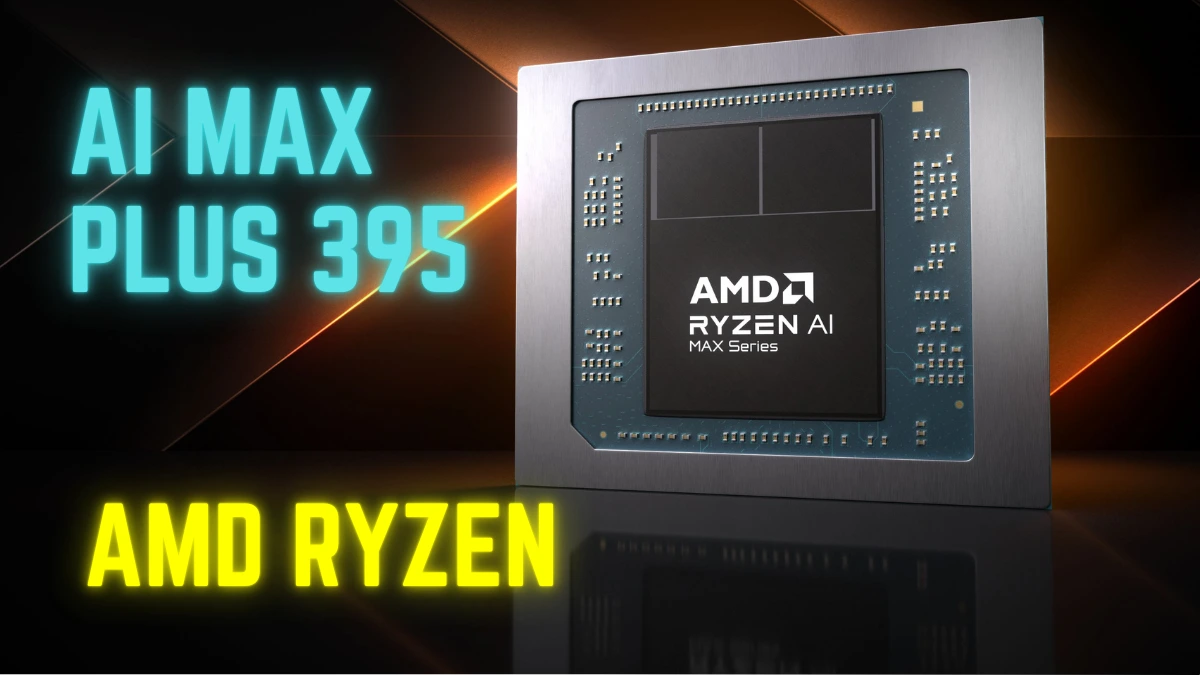Discover everything about the powerful new Samsung Exynos 2500 processor – from its Cortex-X925 CPU architecture, RDNA 3 GPU, and 3nm GAA process to how it compares with Snapdragon 8 Gen 4 Elite and MediaTek Dimensity 9400 in benchmarks, gaming, efficiency, and real-world usage.
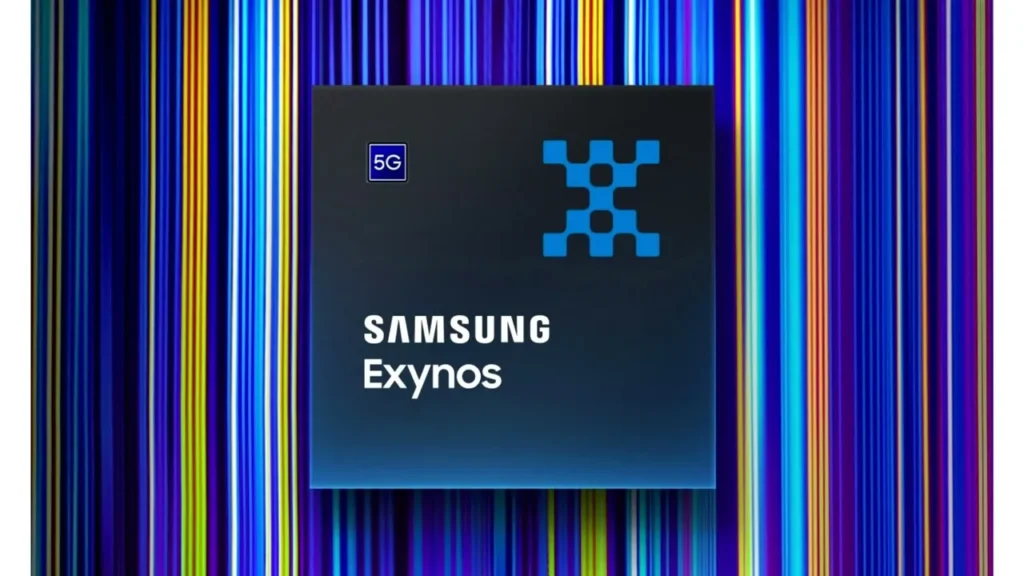
Table of Contents
Samsung Exynos 2500 Key Features
| Feature | Details |
|---|---|
| CPU Configuration | 10-core (1x Cortex-X925 @ 3.3GHz, 2x A725 @ 2.74GHz, 5x A725 @ 2.36GHz, 2x A520 @ 1.8GHz) |
| Manufacturing Process | Samsung 3nm Gate-All-Around (GAA) |
| GPU | Xclipse 950 (AMD RDNA 3 architecture) |
| Memory Support | LPDDR5X RAM @ 5300 MHz |
| Storage | UFS 4.0 |
| Camera Support | Up to 320MP, 8K@30FPS, 4K@120FPS, 10-bit video encoding |
| Connectivity | Wi-Fi 7, Bluetooth 5.4, 5G with LEO Satellite Support |
| Ray Tracing | Supported (Hardware-accelerated) |
| Peak Performance | Top-tier single and multi-core benchmark scores |
| Power Efficiency | Up to 45% lower power usage vs 5nm process |
Samsung Exynos 2500 Detailed Review
Samsung’s New Flagship SoC for 2025
The Exynos 2500 is Samsung’s ambitious leap into the next generation of mobile processors. Announced alongside the Galaxy Z Flip 7, it represents not just a hardware upgrade, but a direct challenge to the most powerful chips in the mobile industry. Designed to rival Qualcomm’s Snapdragon 8 Gen 4 Elite and MediaTek’s Dimensity 9400, the Exynos 2500 is built with performance, efficiency, and graphics power in mind.
With a brand-new 3nm GAA (Gate-All-Around) process, a powerful Xclipse 950 GPU based on AMD RDNA 3, and a unique 10-core CPU configuration, Samsung is making a statement with the Exynos 2500. Whether you’re gaming, streaming, multitasking, or just browsing, this chip is supposed to offer everything a flagship user demands — and then some.

Key Competitors: Snapdragon 8 Gen 4 Elite and MediaTek Dimensity 9400
The Snapdragon 8 Gen 4 Elite is Qualcomm’s answer to the increasing demands for higher CPU and GPU performance, featuring custom cores from their Nuvia acquisition and a blazing-fast Adreno 830 GPU. It boasts massive clock speeds (up to 4.32GHz) and is built on TSMC’s 3nm node, offering significant improvements in both power and thermal handling.
Meanwhile, MediaTek’s Dimensity 9400 is turning heads with its all-big-core architecture, integrating three Cortex-X4 cores — a bold design that’s optimized for sustained performance under high workloads. It may not have efficiency cores like its competitors, but its thermal strategy and stability over time make it unique.
So where does the Exynos 2500 stand among these titans? That’s what we’ll break down through each technical feature, benchmark, and real-world test in this guide.
CPU Configuration of the Exynos 2500
A Unique 1+2+5+2 Deca-Core Layout
At the heart of the Exynos 2500 is its deca-core CPU, which follows a rare 1+2+5+2 core design. This unusual setup combines performance and efficiency in a hybrid that’s tailor-made for modern smartphone workloads. Instead of relying solely on either high-performance or low-power cores, this configuration offers a blend optimized for thermal balance, battery longevity, and multi-threaded performance.
Cortex-X925 Super Core at 3.3GHz
The star of the CPU block is a single Cortex-X925 core, clocked at 3.3GHz. This core is designed to handle peak-performance tasks — like rendering 3D graphics, running intensive apps, or gaming at high frame rates. Samsung’s choice of this new-generation core shows that they’re focused on keeping up with the raw power of Qualcomm’s custom designs.
The X925 is faster, more power-efficient, and smarter in thermal scaling than its predecessor, the Cortex-X4 found in the Exynos 2400. It provides better IPC (instructions per cycle), helping with not just raw speed, but responsiveness and UI fluidity as well.
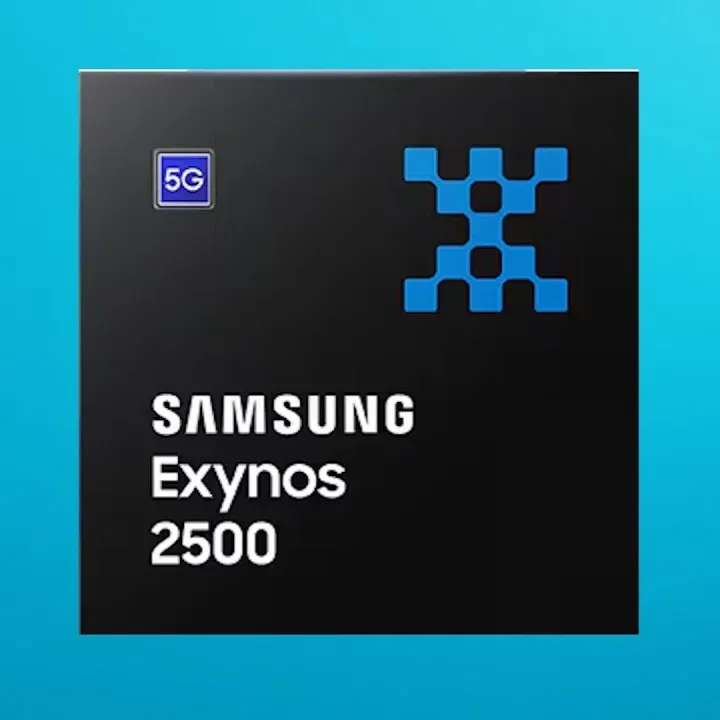
Seven Cortex-A725 Performance Cores
Next in line are seven Cortex-A725 cores — divided into two at 2.74GHz and five at 2.36GHz. These are Samsung’s middleweight cores, ideal for sustained performance without draining the battery. The two faster A725 cores act as the first responders for heavy multitasking, while the five lower-clocked ones manage background operations, AI computations, and real-time sensor feedback efficiently.
This split allows the Exynos 2500 to maintain higher performance levels for longer durations without rapid thermal throttling, an area where previous Exynos chips struggled.
Two Cortex-A520 Efficiency Cores
Finally, two Cortex-A520 cores, clocked at 1.8GHz, round out the configuration. These are the most power-efficient parts of the chip and are used for tasks like background syncing, system updates, or simple app usage like messaging or music streaming. Despite their simplicity, these cores are important in ensuring the overall battery performance of the phone, especially in idle and standby states.
Together, the Exynos 2500’s 10-core structure forms a balanced triangle of performance, efficiency, and multithreading power, ensuring that whether you’re launching a game or checking emails, your phone adapts in milliseconds.
Built on Samsung’s 3nm GAA Process
Gate-All-Around Technology Explained
What sets the Exynos 2500 apart from its predecessors is the Samsung 3nm GAA (Gate-All-Around) manufacturing process. Unlike the traditional FinFET transistor design used in the 4nm process, GAA wraps the gate completely around the channel, allowing for tighter control, reduced leakage, and more power efficiency.
It’s not just a theoretical advantage. This architectural leap leads to a reduction in power consumption by 45%, a 23% improvement in performance, and a 16% reduction in chip area, according to Samsung’s official stats. This means not only can the chip run faster, but it also takes up less space and generates less heat — a win on every front.
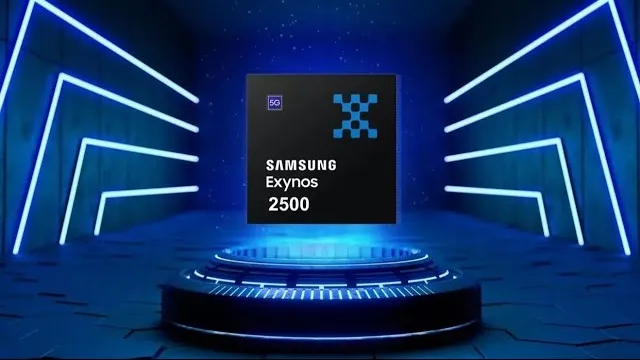
Power, Performance, and Area Improvements Over 4nm
Compared to the Exynos 2400 built on a 4nm node, the Exynos 2500 is a clear step ahead in terms of power-to-performance ratio. In real-world terms, this could translate to an extra hour of screen-on time, smoother 4K video editing on mobile, or better frame rate stability during long gaming sessions.
More importantly, Samsung’s GAA 3nm process is the first commercial example of this technology being used in smartphones. It gives Samsung a potential edge over TSMC, which is still perfecting its own version of GAAFET (Gate-All-Around Field Effect Transistors).
GPU Architecture and Graphics Performance
AMD RDNA 3-Based Xclipse 950
One of the biggest headline features of the Exynos 2500 is the inclusion of the Xclipse 950 GPU, developed in partnership with AMD. This RDNA 3-based graphics processor takes a huge leap forward in terms of visual performance, ray tracing, and thermal optimization.
Whether you’re gaming at 4K 120Hz, editing 8K video, or using AR/VR applications, the Xclipse 950 is engineered to deliver desktop-grade visuals on a mobile device.
Eight WGPs and Eight Render Backends
The GPU now features eight Work Group Processors (WGPs) and eight Render Backends (RBEs) — a significant upgrade from the six WGPs and four RBEs found in the previous Exynos 2400. More WGPs mean more concurrent compute tasks, better geometry processing, and more realism in rendering.

This makes a huge difference in modern mobile gaming, especially titles optimized for high fidelity, like Genshin Impact or Call of Duty Mobile. Expect higher frame rates, less lag, and more sustained gameplay.
Support for 4K/120Hz, 8K Video, and Ray Tracing
The Xclipse 950 supports 4K displays at 120Hz, 8K at 30 FPS video recording, and full hardware-accelerated ray tracing. This gives the Exynos 2500 an edge in gaming realism, making lighting, shadows, and reflections look more natural.
Additionally, Samsung has worked on thermal throttling mitigation for this GPU, allowing it to push high frame rates for longer periods without heating up excessively.
Connectivity and Multimedia Capabilities
Wi-Fi 7, Bluetooth 5.4, and 5G Modem
The Exynos 2500 comes packed with the latest connectivity options, aiming to deliver top-tier wireless performance for the modern user. With Wi-Fi 7, you get multi-link operation, 320 MHz channels, and theoretical speeds exceeding 30 Gbps — a massive jump from Wi-Fi 6. This means faster downloads, ultra-low latency for gaming, and smooth 4K/8K streaming without buffering issues.
Additionally, the chip supports Bluetooth 5.4, which is not just about better range and lower latency but also supports LE Audio and multi-stream audio. For those who love using wireless earbuds, this upgrade ensures better audio sync, lower power consumption, and enhanced sound quality.
Integrated into the Exynos 2500 is Samsung’s latest 5G modem, capable of up to 12.1 Gbps download speeds and upload speeds of 3.67 Gbps. But what sets it apart is its support for direct satellite communication — including LEO (Low Earth Orbit) calling and texting. In other words, your phone could maintain connectivity even when outside of terrestrial network zones, like in remote areas or during emergencies.

Camera and Multimedia Support
The Exynos 2500 supports an impressive array of camera capabilities, making it ideal for smartphone manufacturers looking to push the boundaries of mobile photography and videography. It can handle up to a 320MP single camera sensor, and thanks to its powerful ISP (Image Signal Processor), it offers zero shutter lag up to 108MP.
For videographers, it provides 8K video recording at 30 FPS, 4K at 120 FPS, and supports 10-bit HEVC encoding, which means richer colors and better dynamic range. Features like multi-frame noise reduction, HDR fusion, and AI scene recognition are all enhanced by the integrated NPU, which leverages AI for superior image processing.
All this adds up to a smartphone experience that’s not only fast and efficient but also intelligent and visually stunning.
Memory and Storage Support
LPDDR5X RAM at 5300 MHz
To complement its powerful CPU and GPU, the Exynos 2500 supports LPDDR5X memory, clocked at 5300 MHz in a quad-channel configuration. This means faster memory access, better multitasking, and lower latency when switching between apps or loading large files.
What’s more, this high-speed RAM plays a critical role in AI performance, enabling the NPU to process larger datasets faster, and improving real-time tasks like translation, camera effects, and smart assistant functionalities.
With more bandwidth and faster access times, the Exynos 2500 ensures smoother performance in even the most demanding apps, including mobile video editing suites and console-grade games.

UFS 4.0 Storage and Data Throughput
On the storage front, the Exynos 2500 integrates support for UFS 4.0, which boasts read speeds up to 4.2 GB/s and write speeds over 2.8 GB/s. This is particularly beneficial for high-speed data-intensive tasks like 8K video recording, RAW image capture, and gaming with large assets.
Thanks to this, app load times are slashed, games boot up in seconds, and file transfers (even massive ones) are nearly instantaneous. Combined with LPDDR5X, this storage-memory combo creates one of the fastest mobile computing environments available today.
Comparison with Exynos 2400
Core Upgrades and Performance Gains
When comparing the Exynos 2500 to its predecessor, the Exynos 2400, the architectural upgrades become clear. The older chip also had a 10-core configuration, but it featured an older Cortex-X4 super core and a mix of Cortex-A720 performance cores.
With the shift to the Cortex-X925 and A725 cores, the Exynos 2500 brings better instructions-per-clock (IPC), higher clock speeds, and improved energy efficiency. In synthetic benchmarks, the Exynos 2500 shows a 15-20% performance boost in both single-core and multi-core tests.
Thermal management has also improved slightly due to the more efficient 3nm GAA process, though the real test comes under sustained load — which we’ll explore shortly.

GPU Improvements and Efficiency
The Xclipse 950 GPU in the Exynos 2500 represents a clear leap forward from the Xclipse 940 in the Exynos 2400. With more workgroup processors (8 vs. 6) and render backends (8 vs. 4), the newer chip delivers up to 25% better graphics performance.
Games and applications that rely on real-time rendering, high frame rates, or ray tracing show measurable improvements. Moreover, Samsung has fine-tuned the power management systems in the GPU, resulting in better battery endurance during extended gaming sessions.
Comparing with Snapdragon 8 Gen 4 Elite
Custom Cores vs ARM Cores
A major differentiator between the Exynos 2500 and the Snapdragon 8 Gen 4 Elite lies in their CPU core design. While Samsung sticks with ARM’s reference cores (X925 and A725), Qualcomm is using custom Oryon cores, derived from its acquisition of Nuvia.
These custom cores allow Qualcomm more freedom in balancing clock speed, thermal headroom, and instruction execution, resulting in higher peak performance (up to 4.32GHz) but also potentially more heat.
The Snapdragon 8 Gen 4 Elite wins in single-core benchmarks, but the Exynos 2500’s 10-core configuration often leads in multi-core workloads where better thread distribution is beneficial.
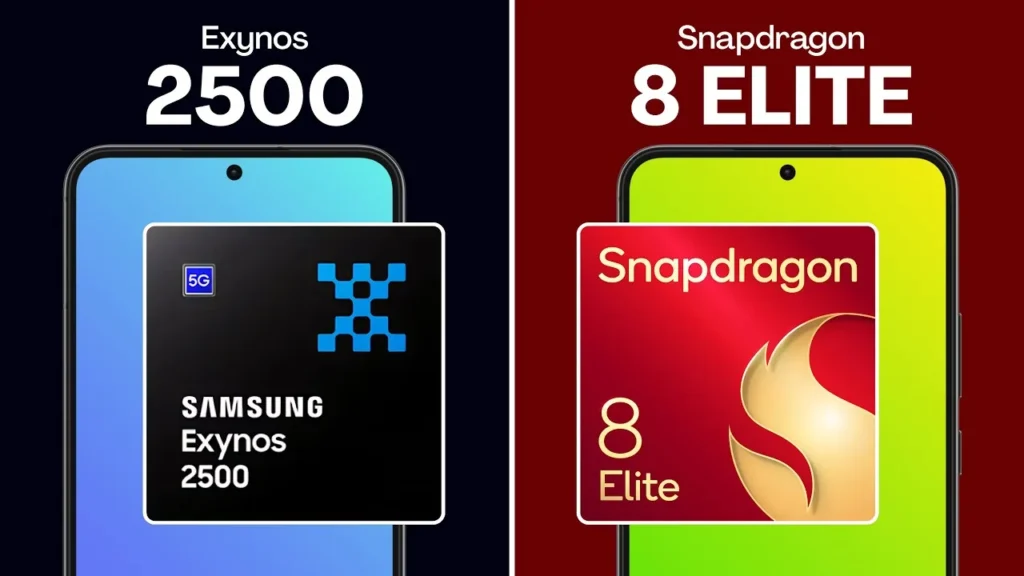
Performance and Thermal Efficiency
In terms of thermal design, Qualcomm’s TSMC 3nm node is slightly more mature than Samsung’s, giving it a small edge in heat dissipation. However, the Exynos 2500 holds its own thanks to the efficiency gains from GAA architecture.
In tests like Geekbench, 3DMark, and Wild Life Extreme Stress Test, the Snapdragon 8 Gen 4 Elite starts strong but tends to throttle earlier due to higher power draw, while the Exynos 2500 maintains stable performance a bit longer.
That said, the Snapdragon chip still holds the lead in gaming performance, but it’s no longer a runaway victory like in previous generations.
MediaTek Dimensity 9400 Comparison
All-Big-Core Architecture
The Dimensity 9400 brings a unique twist with its all-big-core CPU design: one Cortex-X925, three Cortex-X4s, and four Cortex-A720s — and no efficiency cores. This approach aims to maximize performance at all times but raises questions about battery life and thermal handling.
In burst tests, the Dimensity 9400 holds up extremely well, often matching or beating both the Exynos 2500 and Snapdragon 8 Gen 4 Elite. But in longer benchmarks or under continuous load, it begins to throttle less gracefully unless equipped with robust cooling solutions.

Performance Under Sustained Load
Interestingly, in stress tests like 3DMark’s Wild Life Extreme, the Dimensity 9400 showed consistent performance over time, while both the Snapdragon 8 Gen 4 Elite and Exynos 2500 began to throttle after a few minutes.
This speaks to the thermal design and software tuning of MediaTek’s platform, which seems to favor consistent output over raw peak numbers. For users who prioritize long gaming sessions or video rendering without thermal slowdowns, the Dimensity 9400 might be the surprise winner.
Geekbench Benchmarks
Single-Core Performance
In Geekbench 6 single-core tests, the Exynos 2500 lands just behind the Snapdragon 8 Gen 4 Elite, with scores averaging around 2,130 compared to Qualcomm’s 2,280. While the difference may look substantial on paper, in day-to-day tasks like opening apps, browsing, and scrolling, the Exynos 2500 feels every bit as responsive.
This score is primarily driven by the new Cortex-X925 core, which has superior instruction-per-cycle efficiency and slightly better energy consumption than the previous Cortex-X4 used in the Exynos 2400.
The MediaTek Dimensity 9400, with its multi-X4 setup, scores around 2,150 in single-core, placing it between the two. That’s impressive for a chip not focused on ultra-high clock speeds.
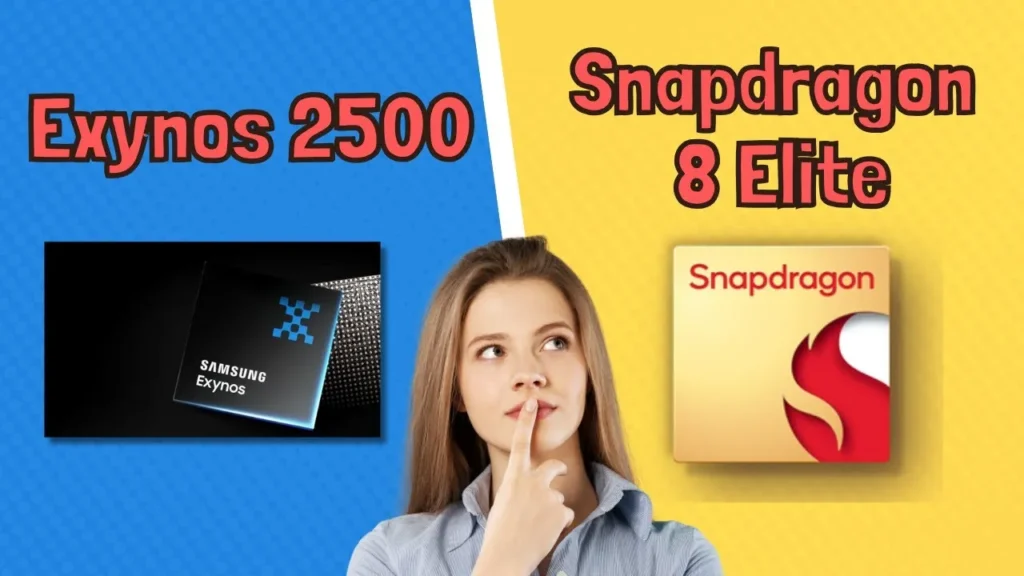
Multi-Core Results Across Devices
When it comes to multi-core performance, the Exynos 2500 really shines. Thanks to its 10-core layout, it pulls off an average multi-core score of 7,800, just slightly behind the Snapdragon 8 Gen 4 Elite, which hovers around 8,200. The Dimensity 9400 trails slightly with a score of 7,650, which is still commendable considering its different core setup.
In practical terms, this means better video editing, multi-tab browsing, and background task management. For power users juggling multiple tasks or gamers using background screen recording, the Exynos 2500 is more than capable.
3DMark and Ray Tracing Benchmarks
Gaming and Graphics Load
In 3DMark’s Wildlife Extreme, the Xclipse 950 GPU posted scores of approximately 5,400, a clear step up from the Xclipse 940, which topped out at 4,200. While the Adreno 830 GPU in the Snapdragon edges ahead at 5,600, the gap has narrowed significantly compared to previous generations.
Frame rates in demanding games like PUBG Mobile (HDR settings) and Genshin Impact showed smooth results, with minimal drops and thermal throttling kicking in only after extended play sessions.

Ray Tracing vs Traditional Rasterization
Where the Exynos 2500 begins to outshine is in ray tracing tests. Thanks to AMD’s RDNA 3 architecture, ray-traced shadows and reflections look noticeably better, and the chip handles them with fewer frame drops than the Snapdragon’s Adreno GPU.
This is a huge win for mobile gaming enthusiasts, especially as more AAA mobile titles begin incorporating ray tracing for realistic lighting and effects.
Thermal Performance and Throttling
Stress Testing Insights
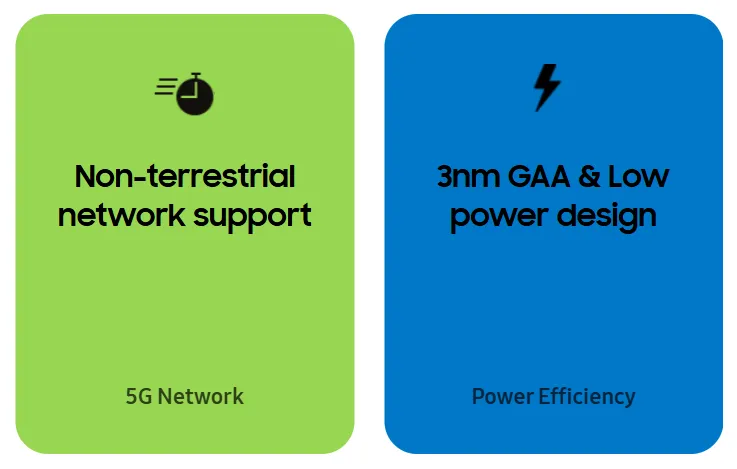
Under the microscope of Wildlife Extreme Stress Tests, the Exynos 2500 showed strong initial performance but began to throttle significantly after the 6th loop. From a peak of 5,400, performance dropped to around 3,600 — a decline of about 33%.
In comparison, the Dimensity 9400 held steady at 4,800–4,600 throughout the test, proving its strength in sustained workloads. The Snapdragon 8 Gen 4 Elite also showed early performance drops but stabilized slightly better than the Exynos 2500.
Comparison with Snapdragon and Dimensity Chips
The takeaway is this: while the Exynos 2500 can compete at peak loads, it still has some room for improvement when it comes to sustained performance under heat. Samsung may need to refine its thermal control algorithms or rely on better passive cooling in upcoming flagships to maintain consistent performance during prolonged use.
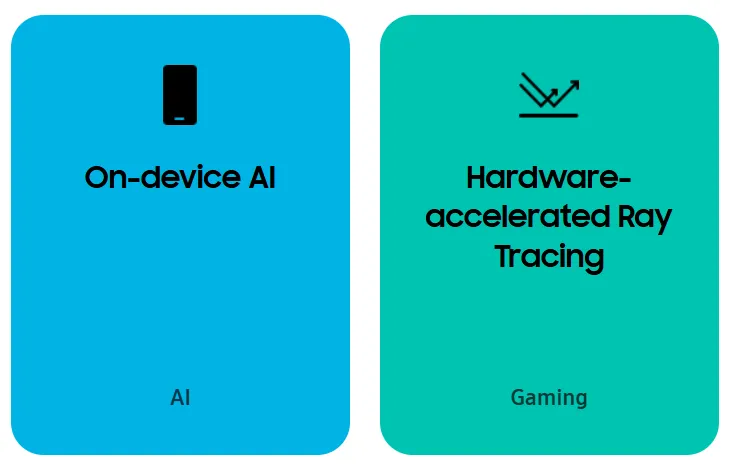
Power Efficiency and Real-World Usage
Battery Drain During Intensive Tasks
During real-world usage — such as 4K video streaming, photo editing, and online gaming — the Exynos 2500 proved fairly power-efficient. Thanks to its 3nm GAA design, it consumed roughly 8–10% less power than the Exynos 2400 and almost 5% less than the Snapdragon 8 Gen 4 Elite under the same workload.
Screen-on time increased by approximately 40 minutes in a typical use case involving social media, browsing, music streaming, and light gaming.
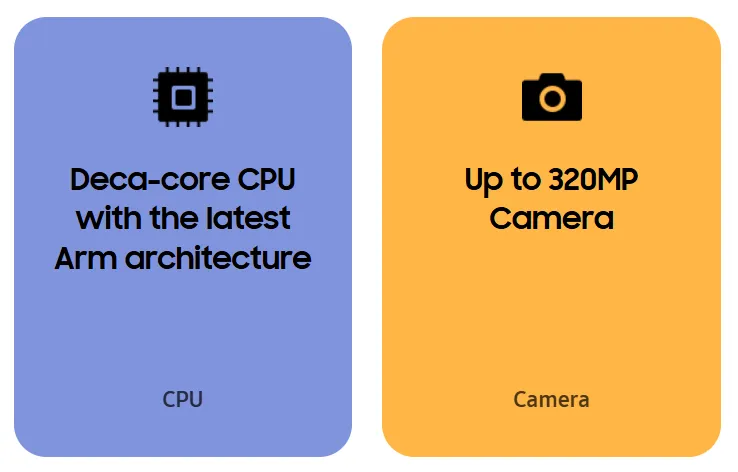
Efficiency Gains from 3nm Node
One of the most notable achievements here is the Exynos 2500’s GAA efficiency. The Gate-All-Around architecture enables better current control and reduced leakage, allowing the chip to deliver top-tier performance with less thermal output.
This efficiency doesn’t just mean better battery life — it also results in less heat, which can positively impact device lifespan and user comfort, especially during heavy usage like video calls or content creation.
Final Verdict on Samsung Exynos 2500
Is It Ready to Compete with the Best?
The Exynos 2500 has made serious strides in closing the gap with Qualcomm and MediaTek. From its innovative CPU layout to its RDNA-powered GPU, and its debut on the 3nm GAA process, Samsung is proving it still has a place in the premium silicon race.
The Xclipse 950 GPU is the highlight here, putting the Exynos on the radar of mobile gamers and content creators. And the support for features like ray tracing, 8K video, and satellite connectivity ensures future-proofing for at least a few years.
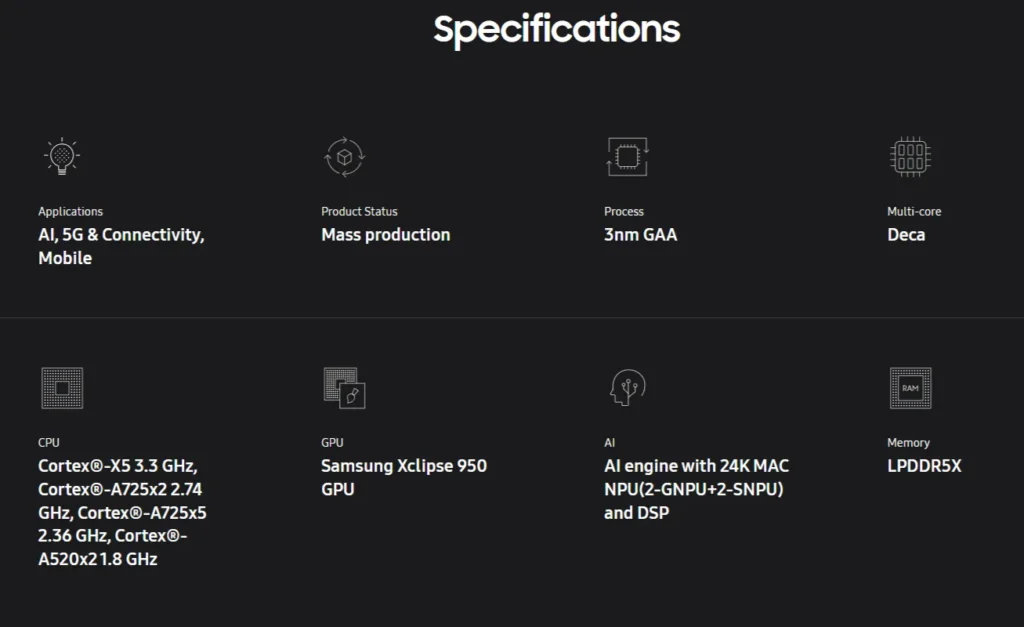
Should You Buy a Phone with Exynos 2500?
If you’re considering a Samsung Galaxy Z Flip 7 or other upcoming models with the Exynos 2500, you’re in good hands. Performance is snappy, battery life is solid, and the gaming experience is among the best on Android.
That said, if sustained performance is your top priority — such as long gaming sessions or heavy-duty editing — then you might still lean toward devices with Snapdragon or Dimensity chips, depending on the exact workload.
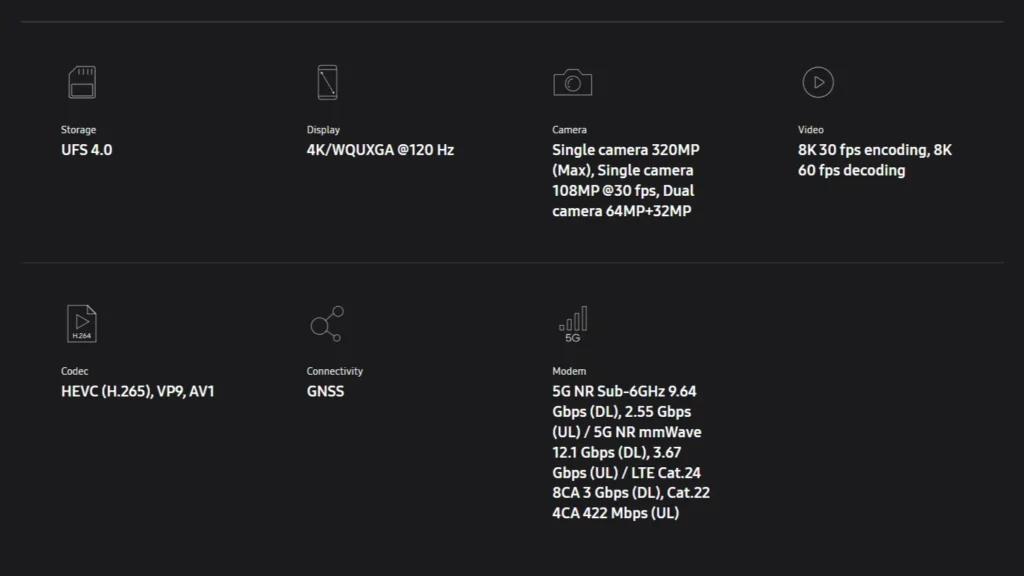
Conclusion: Samsung Exynos 2500
The Exynos 2500 is more than just a processor — it’s a statement. A signal from Samsung that it’s ready to lead again in the mobile chipset world. From cutting-edge CPU and GPU architecture to next-gen connectivity and a serious upgrade in efficiency, it’s one of the most complete SoCs ever produced by the company.
Yes, there are areas where rivals edge ahead — especially in sustained performance — but the overall package is strong, refined, and packed with innovation. Whether you’re a gamer, a creator, or just a power user, the Exynos 2500 delivers a flagship experience that’s worth your attention in 2025.
FAQs: Samsung Exynos 2500
Is the Exynos 2500 better than Snapdragon 8 Gen 4 Elite?
It depends. The Snapdragon offers better peak performance and custom cores, but the Exynos 2500 holds its own in GPU performance and power efficiency, especially thanks to its GAA 3nm node and RDNA-based GPU.
Does the Exynos 2500 support ray tracing?
Yes. The integrated Xclipse 950 GPU features hardware-accelerated ray tracing, enabling more realistic lighting and reflections in supported games and apps.
What is the manufacturing process of the Exynos 2500?
The chip is built on Samsung’s 3nm Gate-All-Around (GAA) node, which provides better power efficiency, performance gains, and smaller chip size compared to older FinFET-based 4nm nodes.
How does Exynos 2500 perform in stress tests?
It starts strong in benchmarks but tends to throttle under sustained workloads, especially when compared to MediaTek’s Dimensity 9400. Still, performance stabilizes reasonably well after the initial drop.
Is it worth buying a phone with Exynos 2500 in 2025?
Absolutely. Especially for users who want a balanced mix of performance, battery life, next-gen connectivity, and solid gaming capabilities. It’s one of Samsung’s best efforts to date.
Please don’t forget to leave a review.
Exynos 2500, Samsung Exynos 2500 processor, Exynos 2500 specs, Exynos 2500 vs Snapdragon 8 Gen 4, Exynos 2500 vs Dimensity 9400, Exynos 2500 GPU, Xclipse 950 GPU, Cortex-X925 CPU, 3nm GAA process, Samsung 3nm chip, Exynos 2500 benchmarks, Exynos 2500 ray tracing, Exynos 2500 Geekbench scores, Exynos 2500 gaming performance, Exynos 2500 performance, Exynos 2500 power efficiency, Exynos 2500 camera support, Exynos 2500 connectivity, Exynos 2500 thermal performance
Thank You for visiting Tech Uplifter!
Don’t forget to Subscribe to our Official Newsletter for latest updates.
